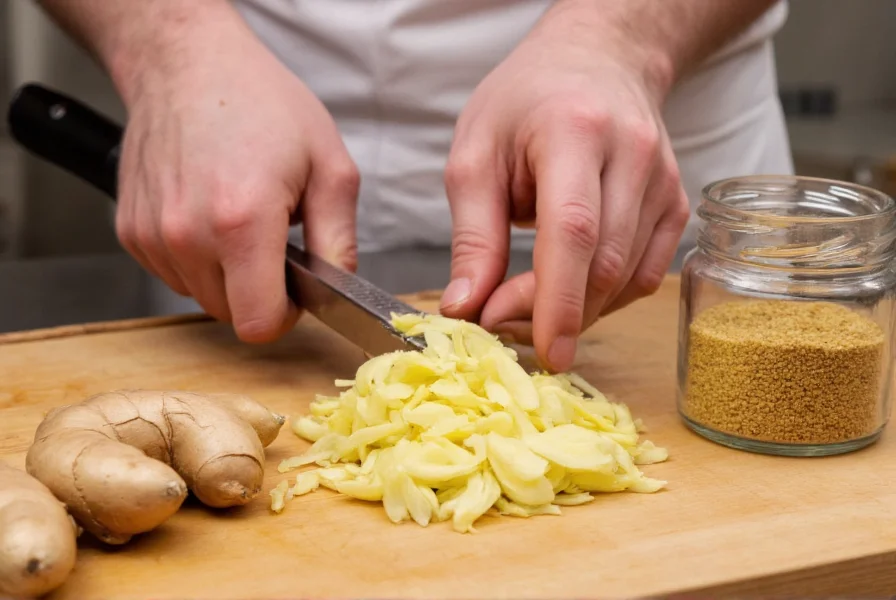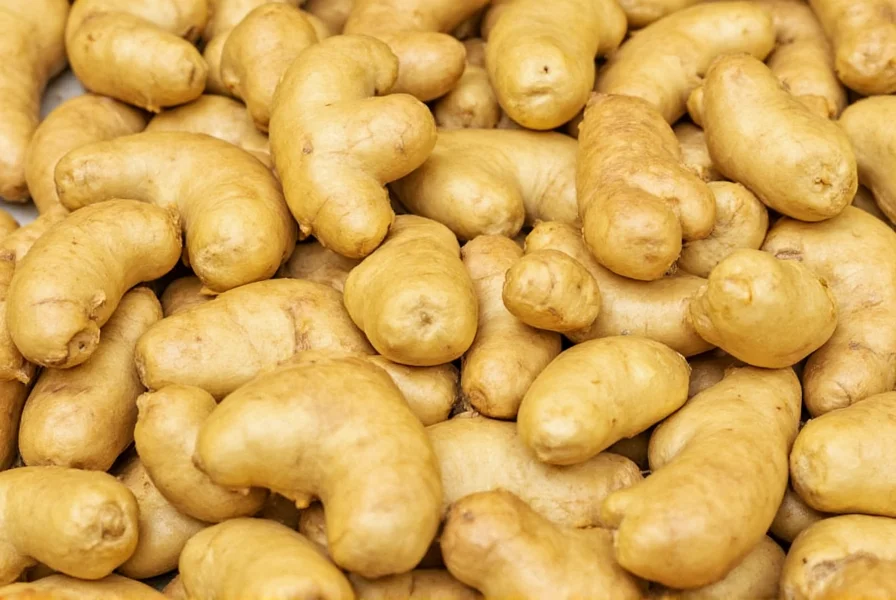Understanding the distinctions between fresh and dried ginger transforms your cooking and maximizes health benefits. Both forms originate from the Zingiber officinale rhizome but undergo different processing that dramatically alters their chemical composition and culinary properties. This comprehensive comparison reveals when to choose each form for optimal results in your kitchen and wellness routine.
Physical Characteristics and Flavor Profiles
Fresh ginger appears as knobby, beige-skinned rhizomes with moist, fibrous flesh. Its flavor delivers an immediate, bright heat with citrusy undertones due to higher concentrations of gingerol compounds. Dried ginger (typically sold as ground powder) presents as a fine, golden-brown spice with a more concentrated, woody aroma. The drying process converts gingerol to zingerone and shogaol, creating a warmer, slightly sweeter profile with less volatile heat.

Nutritional Comparison
| Nutrient (per 1 tbsp) | Fresh Ginger | Dried Ginger |
|---|---|---|
| Gingerol Content | High (1.5-3%) | Low (converted to other compounds) |
| Zingerone Content | Trace amounts | Significantly higher |
| Vitamin C | 0.7 mg | 1.3 mg |
| Fiber | 0.2 g | 0.6 g |
| Calories | 4 | 12 |
This nutritional analysis reveals why fresh ginger vs dried ginger nutritional differences matter for health-conscious cooking. While both forms retain beneficial compounds, fresh ginger contains higher levels of gingerol—the compound responsible for ginger's anti-inflammatory properties. Dried ginger develops higher concentrations of zingerone during processing, which provides different antioxidant benefits.
Culinary Applications and Substitution Guidelines
Professional chefs prioritize fresh ginger for dishes requiring vibrant, immediate heat. Use freshly grated ginger in stir-fries, salad dressings, and seafood dishes where its bright flavor shines. Dried ginger works best in baked goods, spice blends, and slow-cooked dishes like curries and stews where its flavor can fully integrate.
When substituting between forms, remember the fresh ginger dried ginger conversion ratio is not 1:1. For every tablespoon of fresh ginger called for in a recipe, use 1/4 teaspoon of dried ginger. This accounts for dried ginger's concentrated flavor and reduced moisture content. When substituting dried ginger for fresh ginger in baking, increase liquid content slightly to compensate for the powder's absorbency.
Storage Methods and Shelf Life
Proper storage preserves each form's potency. Keep unpeeled fresh ginger in an airtight container in the refrigerator's crisper drawer for up to three weeks. For longer storage, freeze whole or sliced ginger—thaw only what you need. Dried ginger maintains peak flavor for 2-3 years when stored in an opaque container away from heat and light. Always check dried spices for aroma strength before use; faded scent indicates diminished potency.
Health Benefits Comparison
Research shows both forms offer digestive benefits, but through different mechanisms. Fresh ginger's higher gingerol content makes it more effective for immediate nausea relief, particularly for morning sickness and motion sickness. Dried ginger's converted compounds provide longer-lasting anti-inflammatory effects, beneficial for chronic conditions like osteoarthritis.
When considering health benefits of fresh ginger compared to dried, note that fresh ginger contains more volatile compounds that degrade during cooking. For maximum therapeutic benefit, add fresh ginger during the final minutes of cooking or use raw. Dried ginger's stable compounds withstand prolonged heat, making it ideal for simmered medicinal teas.
Practical Tips for Home Cooks
Peel fresh ginger with a spoon rather than a knife—it follows the rhizome's contours without wasting flesh. Freeze peeled ginger chunks for easy grating. When cooking with fresh ginger versus ground ginger, add fresh ginger early in stir-frying to mellow its heat, but late in soups to preserve its brightness. For baked goods requiring ginger's warmth without fibrous texture, combine both forms: dried ginger for base flavor with a touch of fresh for complexity.

When to Choose Each Form
Select fresh ginger when you want:
- Immediate, bright heat in raw applications
- Maximum gingerol content for digestive benefits
- Textural element in dishes
- Visual appeal with visible ginger pieces
- Consistent flavor in baked goods
- Longer shelf stability
- Even distribution in spice blends
- Warmer, less volatile flavor in slow-cooked dishes
Frequently Asked Questions
Can I substitute dried ginger for fresh ginger in recipes?
Yes, but use the proper conversion ratio: 1/4 teaspoon dried ginger equals 1 tablespoon fresh ginger. Remember that dried ginger has a warmer, less citrusy flavor profile, so adjust other seasonings accordingly. When substituting dried for fresh in liquid-based recipes, increase liquid by 1-2 teaspoons to compensate for the powder's absorbency.
Which form has more health benefits - fresh or dried ginger?
Both forms offer distinct health benefits. Fresh ginger contains higher levels of gingerol, making it more effective for immediate nausea relief and digestive issues. Dried ginger develops higher concentrations of zingerone during processing, providing stronger anti-inflammatory effects beneficial for chronic conditions. For maximum benefit, use fresh ginger raw or minimally cooked, and dried ginger in slow-cooked preparations.
How should I store fresh ginger to maximize shelf life?
Store unpeeled fresh ginger in an airtight container in your refrigerator's crisper drawer for up to three weeks. For longer storage, freeze whole or sliced ginger—thaw only what you need. Never store ginger in water as this promotes mold growth. Peeled ginger should be covered in dry sherry or vodka and refrigerated for up to one month.
Why does dried ginger taste different from fresh ginger?
The drying process chemically transforms ginger's compounds. Fresh ginger's primary active compound, gingerol, converts to zingerone and shogaol during drying. This creates a warmer, slightly sweeter flavor profile with less immediate heat. Dried ginger also loses volatile aromatic compounds, resulting in a more concentrated but less complex flavor compared to fresh ginger's bright, citrusy notes.
Can I make my own dried ginger powder at home?
Yes, you can make high-quality dried ginger powder by thinly slicing fresh ginger, dehydrating at 135°F (57°C) for 8-12 hours until brittle, then grinding in a spice grinder. For best results, use a high-speed blender or dedicated spice grinder to achieve fine powder. Store in an airtight container away from light and heat. Homemade powder typically retains stronger flavor than commercial varieties for about 6 months.











 浙公网安备
33010002000092号
浙公网安备
33010002000092号 浙B2-20120091-4
浙B2-20120091-4